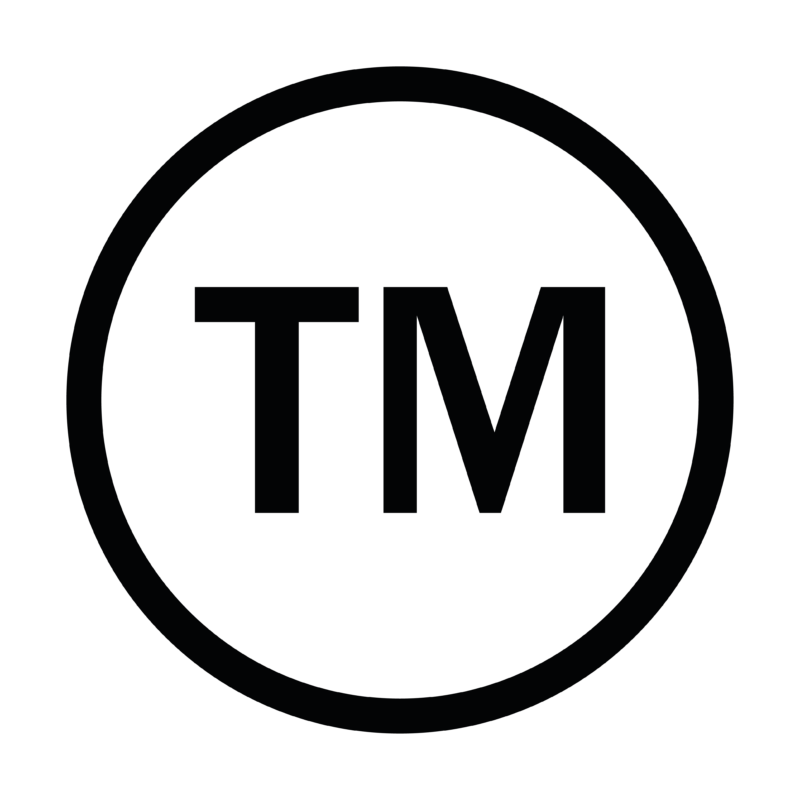There is a difference between a registered trademark and a trademark, which is used without an official registration. The difference matters when you as the owner are involved in a potential action for trademark infringement. Do you know the difference? If not, then read along.
What do the different trademark symbols mean?
The three symbols used to indicate that a name or a logo is a trademark (”R”, ”TM”, and ”SM”) have different meanings.



By using the symbols you show that you consider the trademark your property, and by using the symbols you send a signal that you intend to protect your trademark against counterfeiters. We therefore strongly recommend that you use these symbols correctly.
Can I obtain a trademark protection without a registration?
In certain circumstances, it is possible to obtain a trademark protection without registering the mark. This is done by taking the mark into use and goes under the term ”used trademarks”.
In order for you to enforce rights – or trademark rights – to used trademarks, the trademark must be used to such an extent that there is more than just local knowledge of it.
You can also obtain a trademark right by, for example, marketing your trademark in stores and simultaneously placing advertisements in newspapers or online. An example is how the oil and gas company Q8 obtained a trademark right in one day by launching a national advertisement when entering the Danish market.
If you choose to use a trademark without registering it, you must be able to document the use of the trademark in a possible infringement case, which can be a time-consuming and difficult process.
In addition, you must be aware that not all countries recognize used trademarks. In these countries, it is therefore necessary to register the trademark officially.
Therefore, it is a good idea to check the practice in the countries in which you want to use the trademark. Then you are sure that you have the right to use the trademark and to prevent others from using it.
Here are some rules of thumb based on geographic areas:
Main rule: ONLY use the symbol “R” in the countries, where you actually have a trademark registration, otherwise use the symbol ”TM”.
The following is only meant to give a general overview and only gives an average view of the various geographic areas. Therefore, be aware that the rules may vary in the individual countries. Please contact us directly, if you want more specific information about specific countries.
Europe: If you have a registered EU trademark, you can use the symbol “R” throughout the EU.
If you do not have an EU registration, but have a national trademark registration in an EU member state, e.g. Denmark, then a principle of free movement in the EU applies. This means that the member states must recognize each other’s lawfully produced goods. In connection with the abovementioned symbols, this means that if your trademark is registered in Denmark, and you therefore produce your goods and attach your trademark (with the symbol “R”), this will not constitute a violation of the use of the symbol when these goods are then imported/exported to other EU countries.
If you have neither a registered trademark in the EU nor nationally, use the symbol ”TM” instead. There are different rules in the individual member states, and since the EU has such a close single market, this is the best way possible to protect yourself.
United Kingdom: In the United Kingdom, an incorrect use of the symbol “R” is considered a violation. However, it is generally recognized that in the UK you may use the symbol, if your trademark is only registered somewhere in the world.
USA: In the USA, unlike most countries, there is more or less an obligation to use the symbol ”R”, if your trademark is registered in the USA. In the USA, you can lose the rights to your trademark, if you do not use the symbol, you will be in a weaker position in an infringement case, and you cannot be awarded compensation.
In most countries, you can be fined if you use the symbol without having a trademark registration in that country. This applies, for example, to China, Singapore, Brazil, Australia, and Ireland etc.
In some countries, however, you can also risk a prison sentence. This applies, among others, to Japan, Malaysia, South Korea, and South Africa.
Please note!
Please note that the above only deals with the rules of the relevant geographic areas regarding the actual use of the symbol ”R” and regulation thereof.
Misleading use of the symbol may also be in breach of rules on misleading trade practices and competition law rules. Therefore, you may run the risk of acting in violation of other legal regulations if you do not use the three symbols correctly.
Do you need advice?
We recommend that you officially register your trademark before using it, as this provides the most secure protection. With a trademark registration, you can easily prove your right to operate under the trademark, even if a competitor accuses you of copying their products.
You are welcome to contact Plougmann Vingtoft’s trademark experts, who will be able to give you advice.
Find our experts on this page and contact them directly – or send a non-binding inquiry using the form below.
Get in touch with our experts
Please avoid using this form for concerns about ongoing cases. Instead, contact your Plougmann Vingtoft expert directly.
